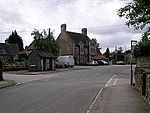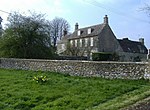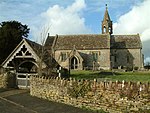Hullavington railway station
1903 establishments in England1965 disestablishments in EnglandDisused railway stations in WiltshireFormer Great Western Railway stationsPages with no open date in Infobox station ... and 4 more
Railway stations in Great Britain closed in 1961Railway stations in Great Britain opened in 1903South West England railway station stubsUse British English from September 2017

Hullavington railway station served the civil parish of Hullavington, Wiltshire, England from 1903 to 1965 on the South Wales Main Line.
Excerpt from the Wikipedia article Hullavington railway station (License: CC BY-SA 3.0, Authors, Images).Hullavington railway station
The Street,
Geographical coordinates (GPS) Address External links Nearby Places Show on map
Geographical coordinates (GPS)
| Latitude | Longitude |
|---|---|
| N 51.5442 ° | E -2.1459 ° |
Address
Hullavington
The Street
SN14 6ES
England, United Kingdom
Open on Google Maps









